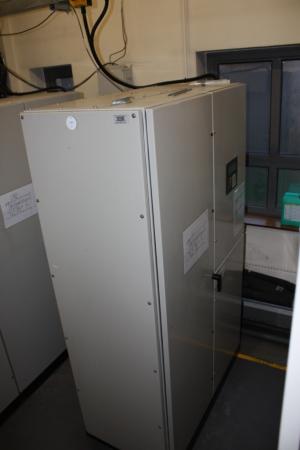- Group home
- You must register/login in order to post into this group.
Upgrade of Water Treatment Systems in the Dialysis Unit

By: Bradford Teaching Hospitals NHS Foundation Trust
Additional capacity for water treatment in case of unit expansion or plant failure; nursing time no longer required for heat disinfection; reduced maintenance costs
£18,000 (Actual)
8.42 tonnes CO2e (Estimated)
The St Lukes dialysis unit has gone through many expansions since its opening in 1994. Following the 2007 expansion, technicians noted that although there were now four water treatment systems, only the two installed from post 2002 had a ‘water saving’ feature, while the original water plants wasted approximately 70% more reject water to drain.
In November 2009, with support from their Green Nephrology Local Representative, Dr John Stoves, the renal technicians submitted a proposal to the Trust Board, recommending upgrade of the two older water treatment plants. For a capital outlay of £60,000, they estimated that the upgrade could deliver a yearly saving of £20,000 on water supply and sewerage.
The project brought together the renal team with the Trust Patient Service Manager, the Deputy Director and Director of Estates, the Director of Finance, and the Procurement Department. A business case was developed and a budget of £60,000 was agreed from the capital replacement fund. Following a five-month procurement process, the new plants were installed in January/February 2011. A straight replacement with Gambro systems was chosen to maintain standardisation and simplify maintenance.
Environmental & Financial Benefits (section updated November 2012)
The new systems are saving 8 million litres of water per year, a carbon saving of 8.42 tonnes CO2e* and cost saving £18,000 from avoided water supply and sewerage. Under the Trust’s Cost Improvement Programme, 20% of the savings are returned to the renal department budget.
* Calculated using conversion factors for water supply and water treatment, taken from the 2012 Guidelines to Defra / DECC's GHG Conversion Factors for Company Reporting (Annex 9, Table 9a): 344 kg CO2e / million litres (water supply) and 709 kg CO2e / million litres (water treatment)
Additional Benefits
Future proofing: The updated systems allow greater water flow to the dialysis unit, therefore allowing for future expansions of the unit, and providing further ‘redundancy’ in case of water treatment system breakdowns.
Heat disinfections: as the newer systems are able to automatically heat disinfect, it is no longer necessary for two nurses have to stay behind after everyone else has finished to switch the water system in to heat disinfection.
Maintenance: costs have been further reduced as the renal technicians can now carry out maintenance in-house.
Renal Dialysis Unit, St Luke's Hospital, Bradford
To reduce water wastage and save money
Support from the Bradford Green Nephrology Local Representative, Dr John Stoves (consultant nephrologist)
Report published in the Trust newsletter ("Trust Today" March 2011, p8)
